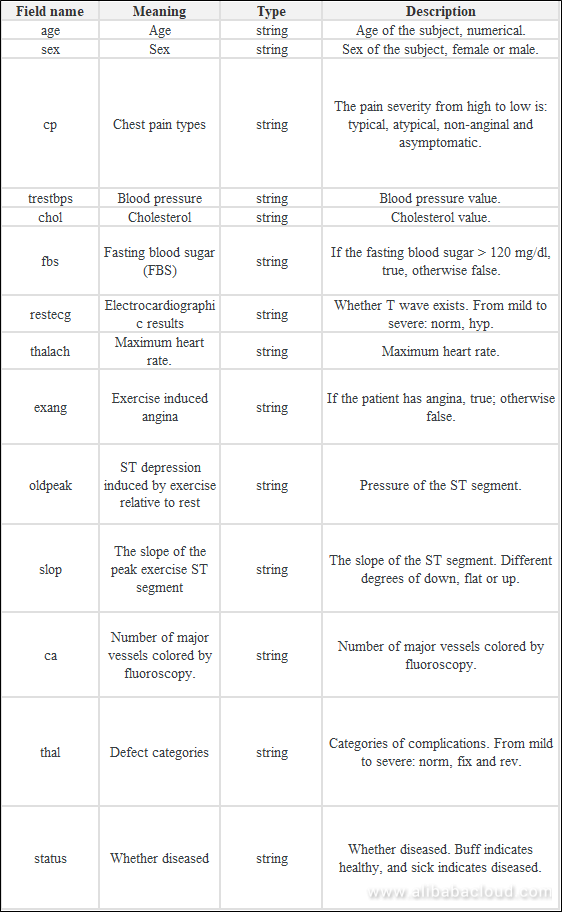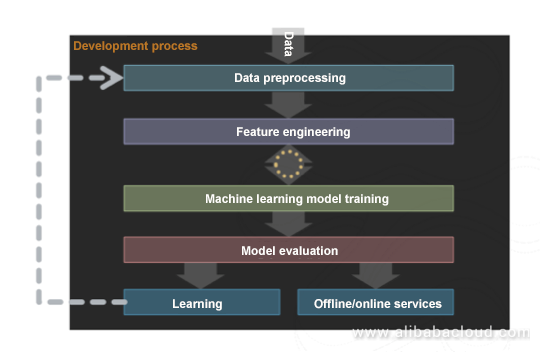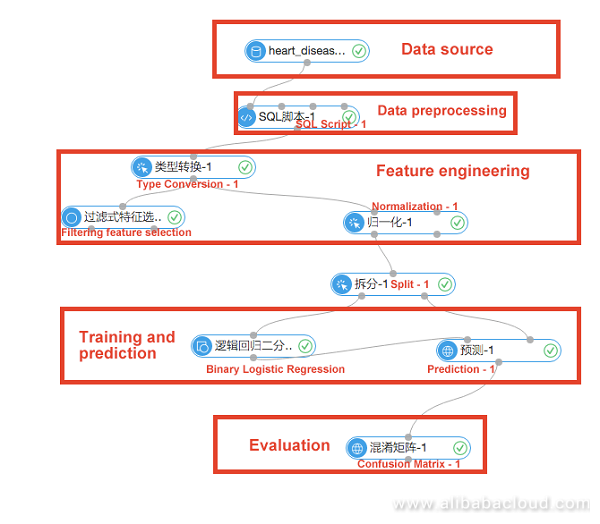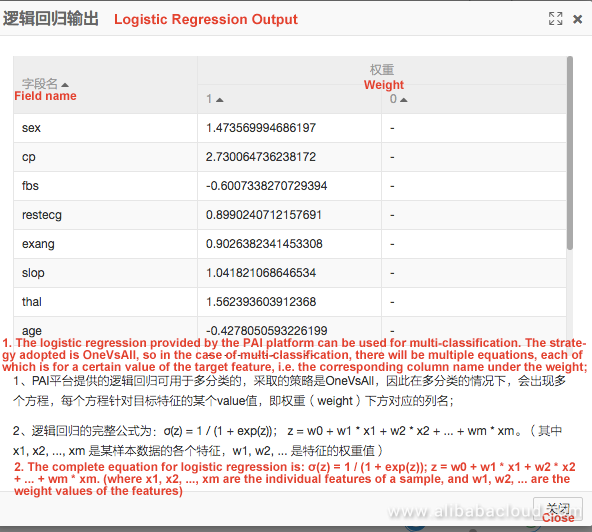By Garvin Li
Heart disease is one of the leading cause of death worldwide; approximately one third of the world's deaths are caused by heart disease. In China, hundreds of thousands of people die of heart disease every year. Researchers from across the globe are actively finding ways to prevent and accurately diagnose heart-related diseases at an early stage. One of the common approaches to do this is by analyzing historical medical data using big data and machine learning technologies.
If we can analyze the impact of different features on heart disease through data mining by extracting physical examination indicators, we can predict and ideally prevent of heart diseases altogether. This article will illustrate how to build a heart disease prediction case through the Alibaba Cloud Machine Learning Platform for Artificial Intelligence (PAI) using real data.
The data source is UCI open source dataset heart_disease. It contains physical data from 303 patients with heart disease in a certain area of the United States. The detailed fields are as follows:

The data mining process is as follows:

Overall experience procedure:

Data preprocessing is also called data cleansing and mainly serves for data de-noising, filling missing values and type conversion operations before the data enters the algorithm procedure. The input data for this experiment consisted of 14 features and 1 target column. The problem to be addressed is to predict whether the user will suffer heart disease based on the user's physical indicators. Each sample is either suffered or not.
This classification experiment adopts the linear model logistic regression; the required input features are all double-type data, as shown in the figure below.

A lot of data in the figure above is text description. During data preprocessing, we need to convert strings into numerals based on the meaning of each field.
Boolean data
For example, the field "sex" has two forms: female and male, which can be presented as 0 and 1 respectively.
Multi-value data
For example, the field "cp", which indicates chest pain. We can map the severity from low to high into numerical values of 0 to 3.
Data preprocessing is implemented through SQL scripts.
1.
2. select age,
3. (case sex when 'male' then 1 else 0 end) as sex,
4. (case cp when 'angina' then 0 when 'notang' then 1 else 2 end) as cp,
5. trestbps,
6. chol,
7. (case fbs when 'true' then 1 else 0 end) as fbs,
8. (case restecg when 'norm' then 0 when 'abn' then 1 else 2 end) as restecg,
9. thalach,
10. (case exang when 'true' then 1 else 0 end) as exang,
11. oldpeak,
12. (case slop when 'up' then 0 when 'flat' then 1 else 2 end) as slop,
13. ca,
14. (case thal when 'norm' then 0 when 'fix' then 1 else 2 end) as thal,
15. (case status when 'sick' then 1 else 0 end) as ifHealth
16. from ${t1};The feature engineering mainly includes feature derivation and scale variation. In this example, there are two components for feature engineering.
Filtering feature selection
Determine the impact of each feature on the results and express with entropy and Gini coefficient. Right click the component and select View Evaluation Report to display the final result, as shown in the following figure.

Normalization
Change the range of values for each feature to between 0 and 1, which removes the effect of the dimension on the result. The equation is: result = (val-min) / (max - min). This experiment uses binary logistic regression for model training and needs to remove the dimensional impact for each feature. The normalization results are shown in the figure below.

Supervised learning uses training models with known results. Since whether each sample has heart disease is known, this experiment is classified as supervised learning. The problem to be addressed is to predict whether a group of users suffer from heart disease.
Splitting
First, the data is divided into two parts by component splitting. This experiment split the data based on a ratio of 7:3 for the training set and the prediction set. The training set data flows into the binary logistic regression component for model training. The prediction set data flows into the prediction component.
Binary logistic regression
Logistic regression is a linear model where classification is achieved by computing the threshold value of the results (see relevant documentation for detailed algorithm). Ready models after logical regression can be viewed in the model tab.

Prediction
The two inputs of the prediction component are the model and the prediction set respectively. The prediction result shows the predicted data, real data and the probability of different results in each group.
Parameters such as the accuracy of the model can be viewed through the confusion matrix component.

This component makes it easy to evaluate models based on the accuracy of the predictions.
From the above data exploration procedures we can draw the following conclusions.
Model weight
Through the weights of the corresponding features of each model, the impact of the features on the results can be roughly analyzed. If the model weights are as follows

The thalach (maximum heart rate achieved) generates the biggest impact on whether or not heart disease occurs.
Sex has no impact on whether or not heart disease occurs.
Model effect
The 14 features provided in this article can help to achieve a heart disease prediction accuracy of more than 80%. The model can be used for prediction to assist physicians in the prevention and treatment of heart disease.
To learn more about Alibaba Cloud Machine Learning Platform for Artificial Intelligence (PAI), visit www.alibabacloud.com/product/machine-learning
Analyzing Census Data Using Alibaba Cloud's Machine Learning Platform
Alibaba Cloud Machine Learning Platform for AI: Student Exam Score Prediction
Alibaba Clouder - September 28, 2017
Alibaba Clouder - July 17, 2020
Alibaba Clouder - June 29, 2020
GarvinLi - February 28, 2019
Alibaba Clouder - June 17, 2020
Alibaba Cloud Indonesia - January 12, 2024
 Platform For AI
Platform For AI
A platform that provides enterprise-level data modeling services based on machine learning algorithms to quickly meet your needs for data-driven operations.
Learn More Big Data Consulting for Data Technology Solution
Big Data Consulting for Data Technology Solution
Alibaba Cloud provides big data consulting services to help enterprises leverage advanced data technology.
Learn More Big Data Consulting Services for Retail Solution
Big Data Consulting Services for Retail Solution
Alibaba Cloud experts provide retailers with a lightweight and customized big data consulting service to help you assess your big data maturity and plan your big data journey.
Learn More Epidemic Prediction Solution
Epidemic Prediction Solution
This technology can be used to predict the spread of COVID-19 and help decision makers evaluate the impact of various prevention and control measures on the development of the epidemic.
Learn MoreMore Posts by GarvinLi